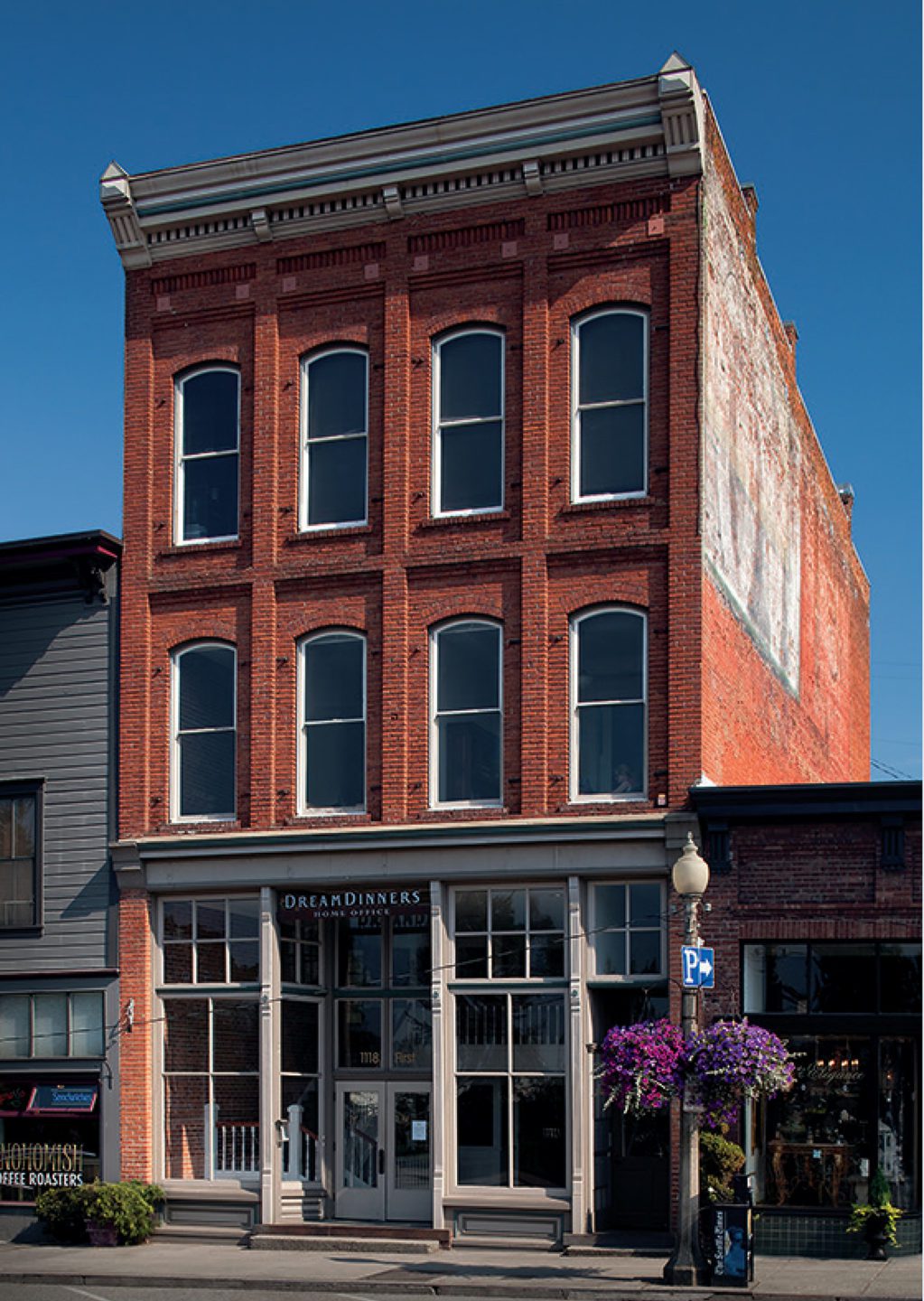-
Retreat Plant Company/Burns Brick Block
1118 First Street
Thursday, June 26, 1890, was a special election day in the Village of Snohomish. When the day was done, it was a City, the vote to incorporate as a city of the third class having passed, 360 votes to 21. Even bigger news: The town had gone Democratic! Founder and Republican player in territorial politics, E. C. Ferguson, lost the mayoral seat to Hycranus Blackman, who “will make an excellent officer,” wrote The Sun on July 4, 1890, “(but) it regrets that the father of Snohomish could not have had the honor of being her first mayor.”
On July 13, 1890, the celebrated architect and city council member, J. S. White, turned 45, and he was having a good year. Among several projects, he was building the Burns Block, on First Street, to become Snohomish’s tallest building at three stories, all brick. The owner, John Burns, “long-haired old fellow, with unkempt beard and a small dog, who has been a familiar figure about Snohomish,” as described by The Eye, was building on speculation. The newly classified city was in a building boom.
Both newspapers mentioned the Horton brothers’ move into the Burns Brick Block. First was The Eye on December 6, 1890; then The Sun on December 12, which wrote: “Horton Bros. have moved into their fine new store in the new brick Burns’ block. They now have one of the finest book and stationery stores on the Sound.” Gilbert Horton was once the imaginative owner of the Palace Floating Gallery that he built in Tacoma in 1884. In addition to a robust portrait business, Horton documented the development of many places around the Sound; none more so than our riverside settlement in its first bloom of wooden wharfs, early streetscapes of dirt paths and white picket fences.
In December 1890, Snohomish residents were once again called to vote, and this time they returned Ferguson to the mayor’s chair while sending White home from the City Council. White lived on Avenue H, the west end of town, but now there was a sidewalk of planking across town along Second street, no longer a muddy path of humiliation.
Continue walking down First Street, on the south side hopefully in the sunshine, pass by the storefront to the parking lot to view the mural filling the west side of the two-story building, while we learn about the Wilburs.


